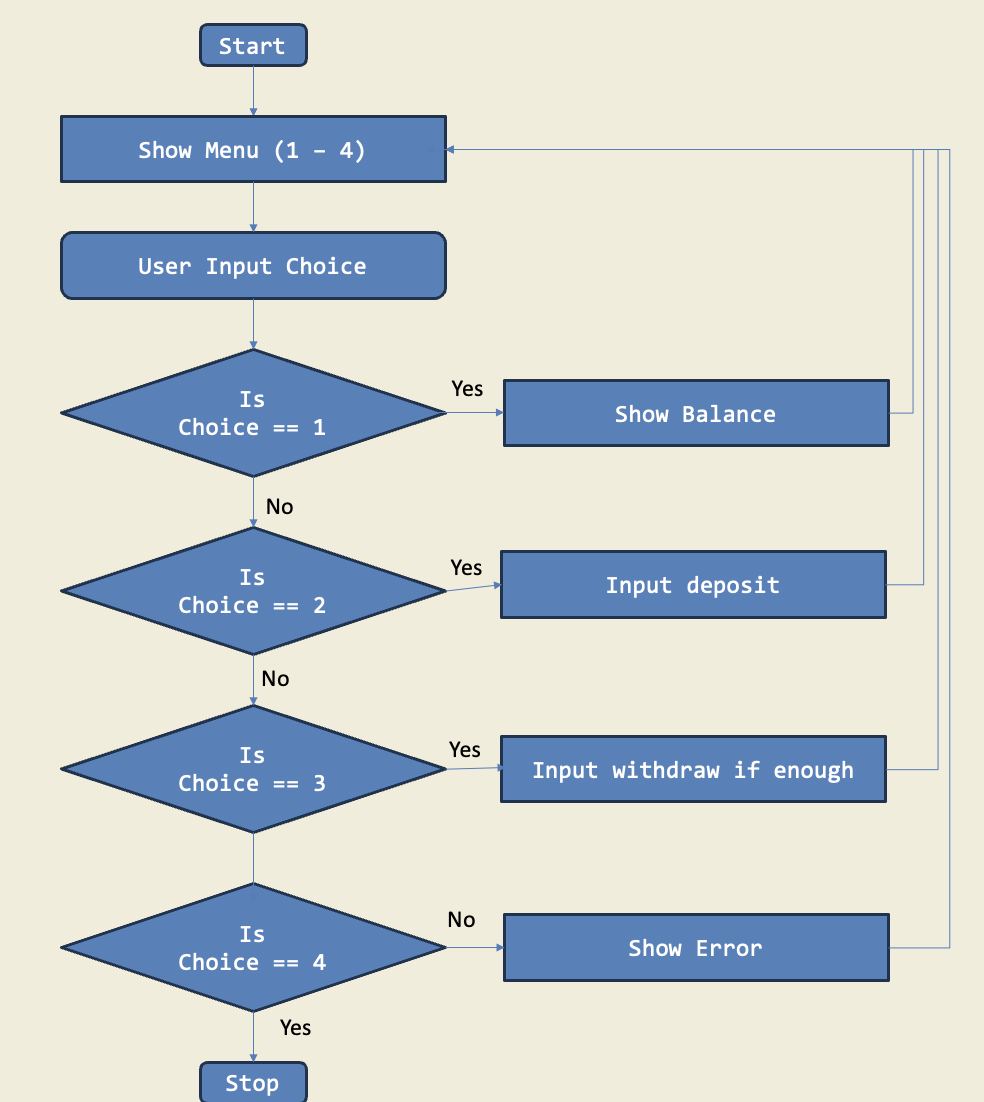Elly's Coding Projects
Hi, I'm Elly! I enjoy building robots and using coding to solve real-world problems. Starting with block-based coding helped me understand how to control my robots and test new ideas. Later, I wanted to learn something more advanced, so I began using Python. Python showed me how to write my own programs and think in new ways. Combining robotics and Python makes me excited to create projects that can help others and make learning fun. I hope you enjoy seeing what I have built!

Touch Activated Flags on a Tower
I learnt how to use the LEGO technic parts to design and build mechanical structures. Integrating coding concepts such as conditionals (if-else) to control behavior based on sensor input, I created interactive models that respond to real-world stimuli. Among many other projects, I created a tower with four flags that spins only if the touch sensor is activated, demonstrating how automation and conditional logic are used in real-world systems to enhance safety and efficiency.
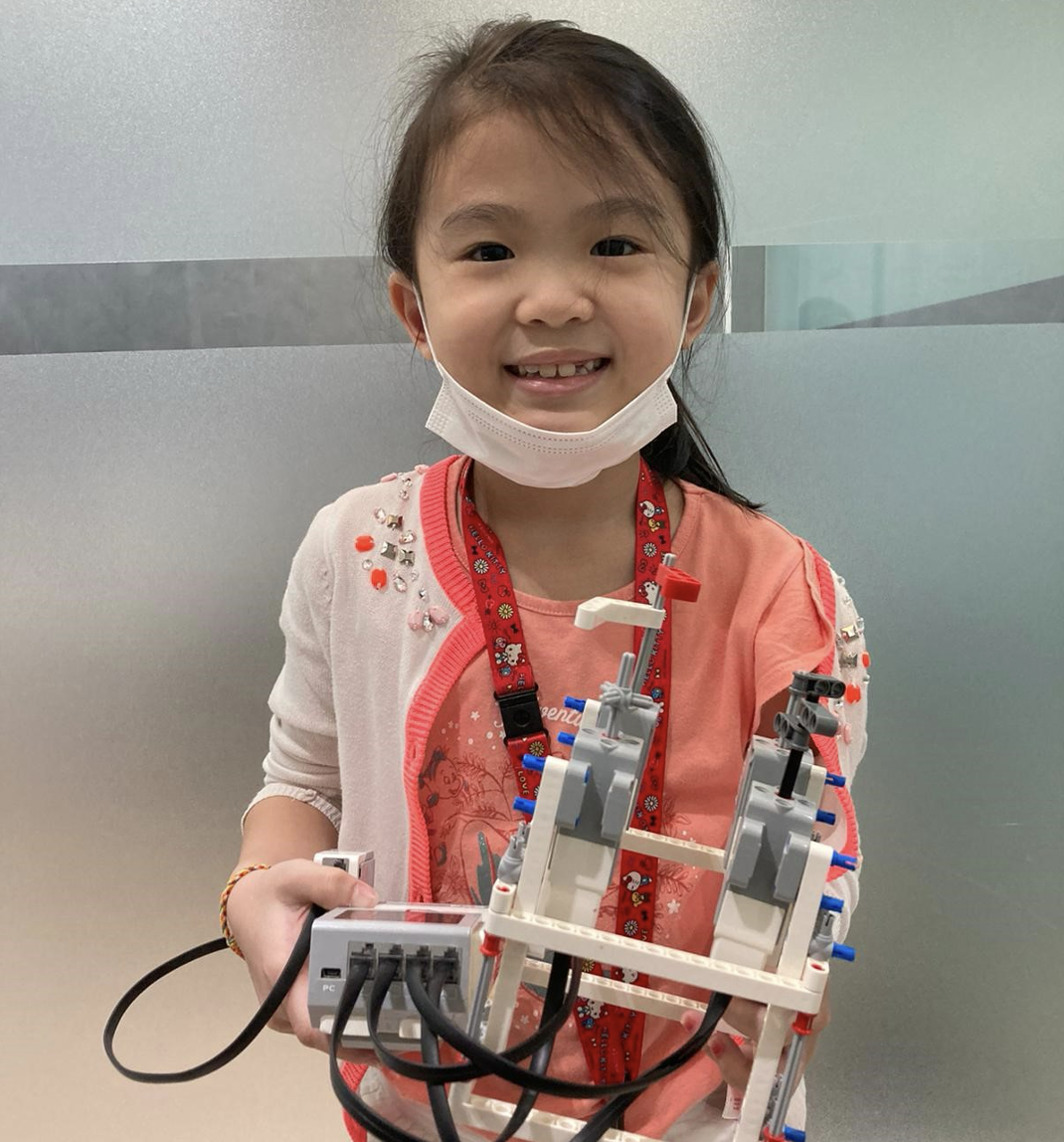
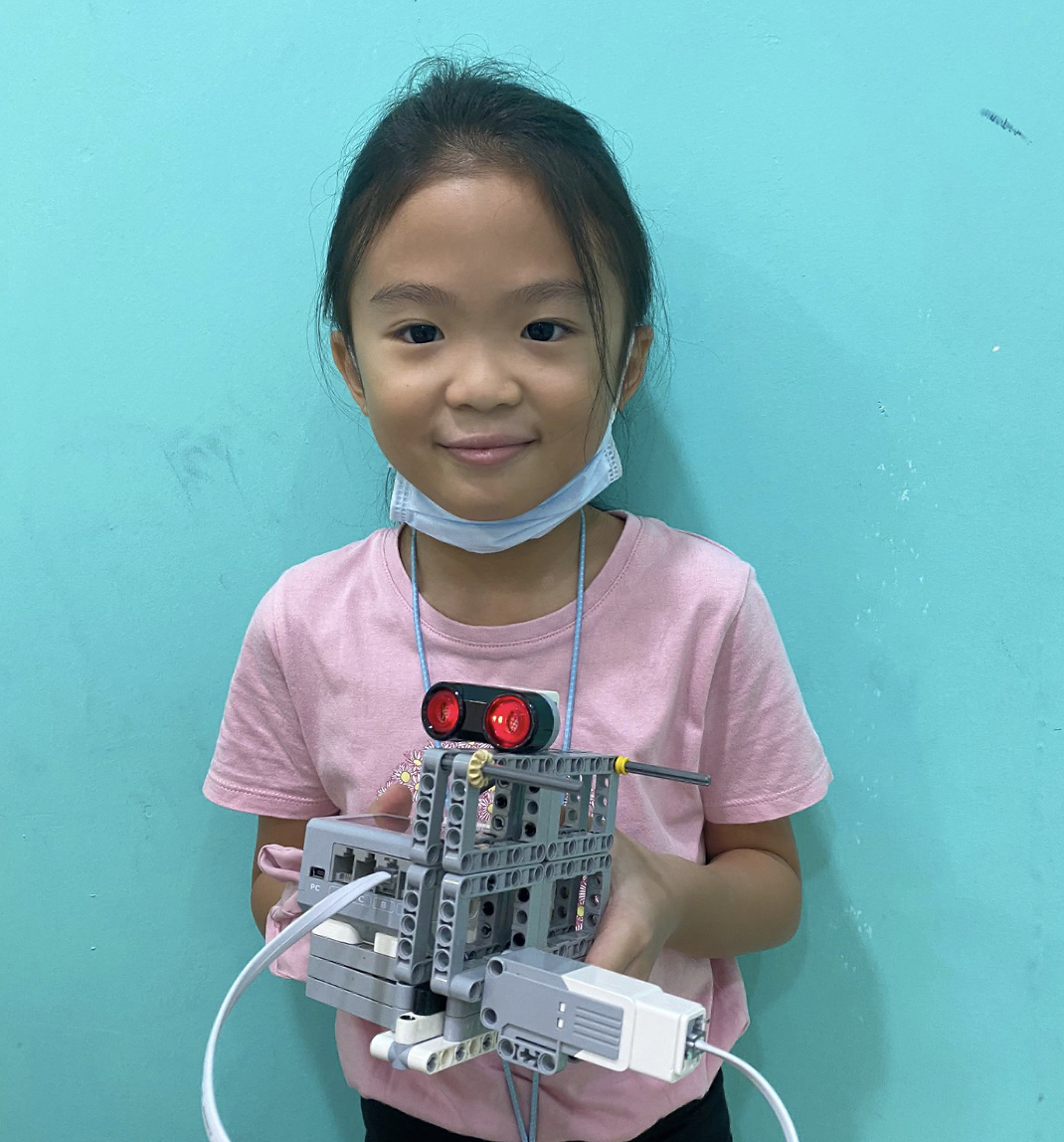
Ultrasonic Activated Door Mechanism
I learned how to use LEGO Technic parts to design and build various mechanical structures. By applying coding concepts such as conditionals (if-else) and using an ultrasonic sensor, I built a rack-and-pinion door mechanism that automatically opens when it detects someone approaching. I set a threshold distance to reliably identify when a person is close enough to trigger the door. This project simulates real-world automatic door systems commonly found in malls, offices, and public transport, where proximity sensors ensure convenient and hands-free access while enhancing safety and energy efficiency.
Ultrasonic Activated Coin Dispenser
Inspired by arcade coin dispensers, I applied the design principles and coding skills I learned to build a distance-activated coin dispenser. The dispenser uses two ultrasonic sensors that detect my hand in a specific sequence within a defined distance threshold. When both sensors are triggered in order, the mechanism opens to release coins. This project demonstrates how sensor integration and conditional logic can create automated systems, similar to those used in vending machines."
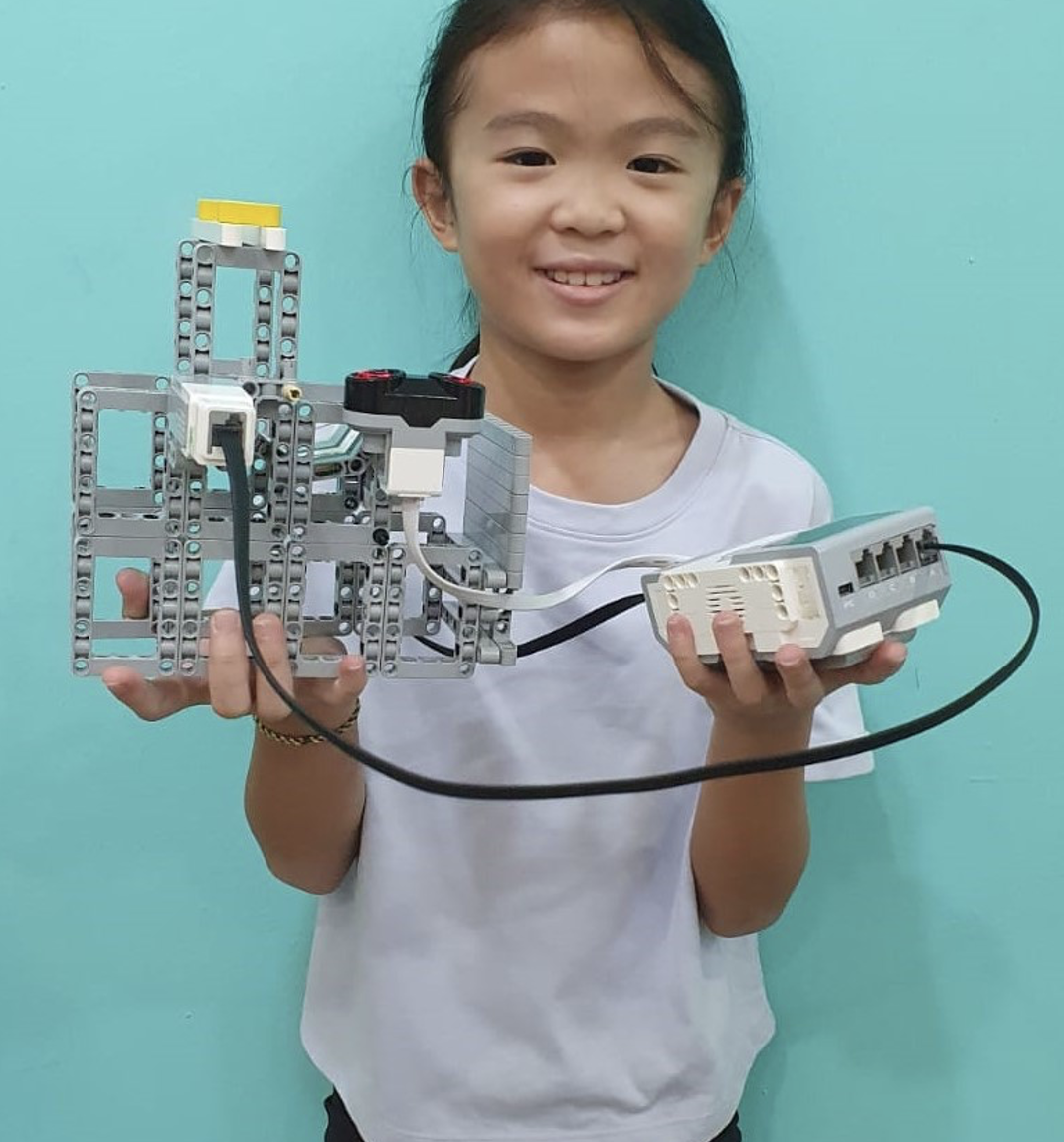
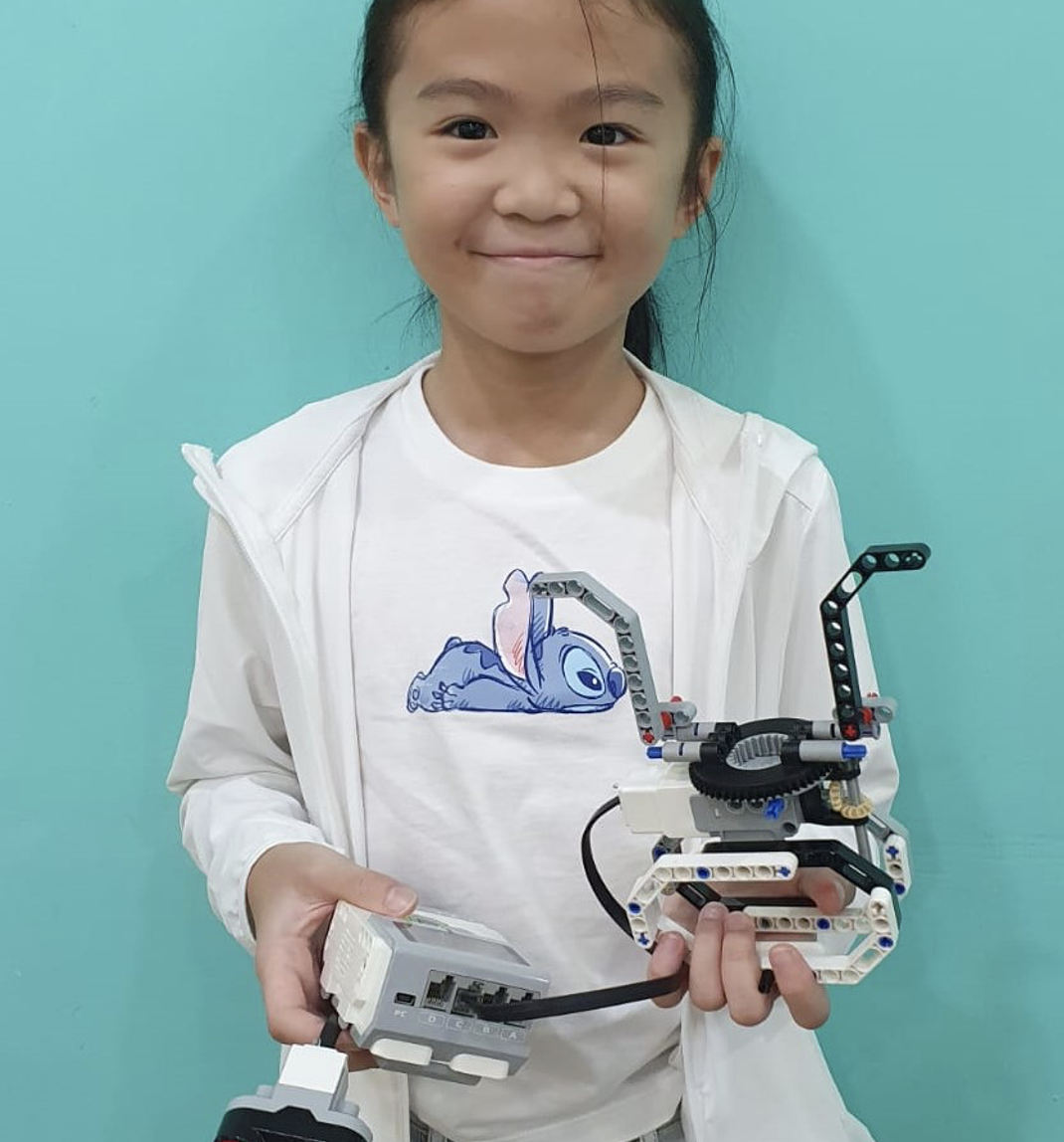
Ultrasonic Activated Spinning Rabbit Head
My younger siblings loved playing with their toy rabbit head, which spins when the wind hits it. They used to manually spin and stop it, which was fun but limited. To make it more interactive and engaging, I decided to create an automated version of the toy. In this upgraded version, the rabbit head starts spinning automatically as soon as the program runs. When the ultrasonic sensor detects someone nearby—such as a child approaching—the spinning stops, and the toy returns to its original position."
Color Sensor Activated Tea Cup Ride
As someone who enjoys visiting amusement parks—especially the tea cup ride, I recreated a classic amusement park teacup ride using LEGO Technic parts. It incorporates two color sensors to make decisions about when and how to spin, based on both the color detected and the amount of reflected light. This adds a layer of safety and control that reflects how real-world rides use environment-sensitive automation."
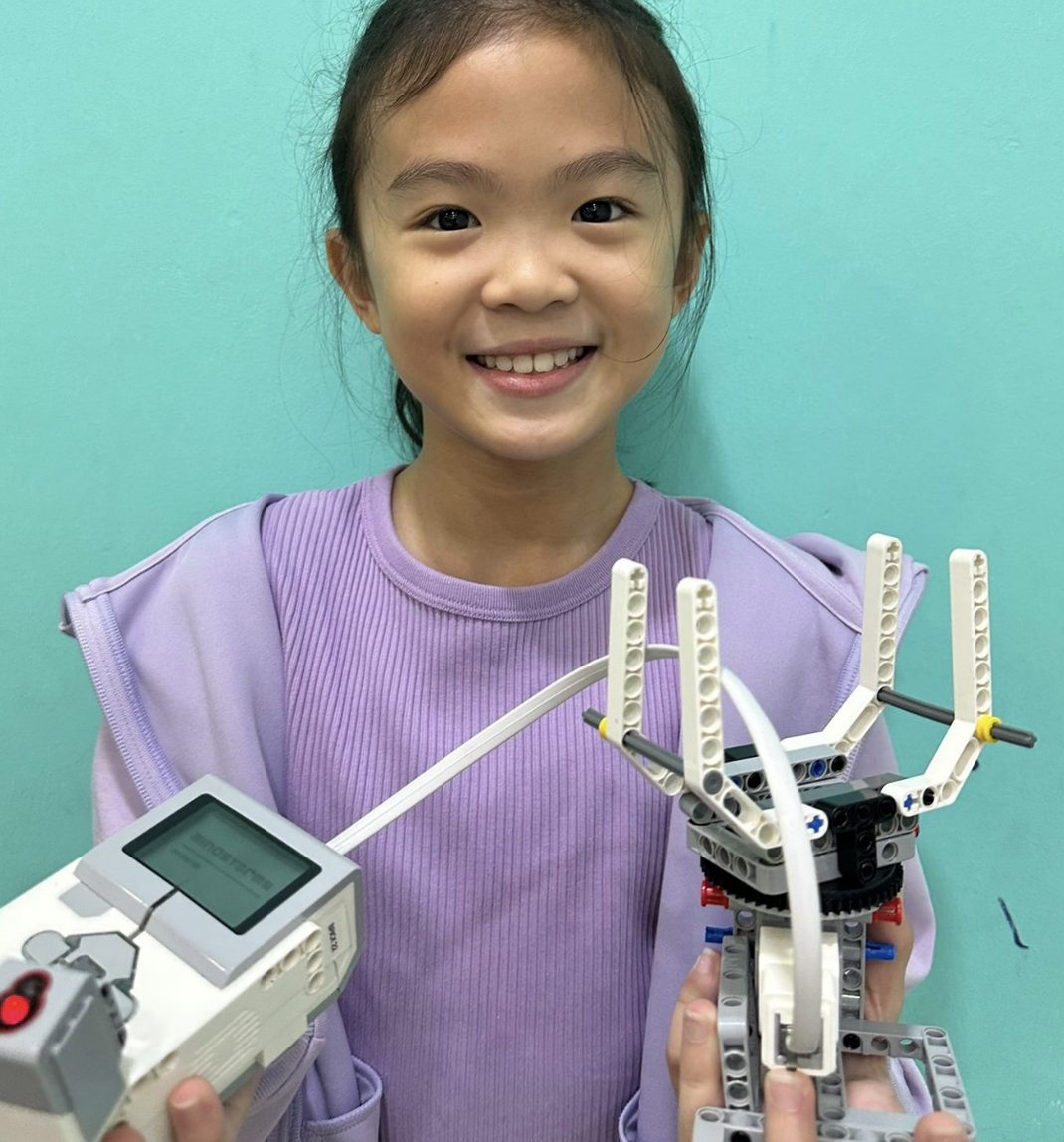
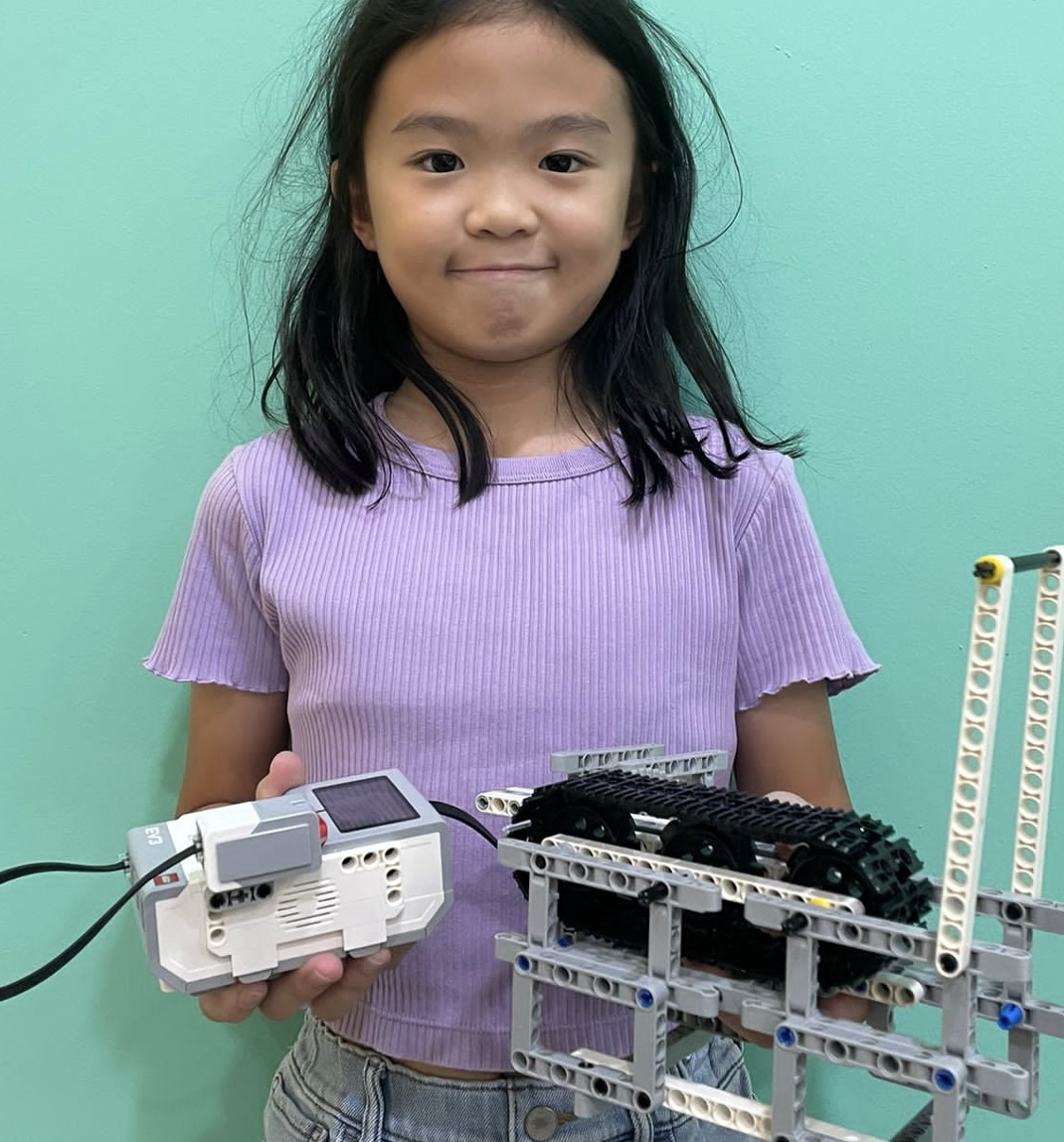
Touch Activated Increasing & Decreasing Treadmill
As someone who enjoys exercising on a treadmill, I decided to recreate an automated treadmill using LEGO Technic parts. This miniature version functions similarly to a real treadmill—its speed is controlled by user input. With the use of a touch sensor, and coding concepts such as variables and if-else statements, the treadmill increases speed with each press—just like speed adjustments on a real gym machine."
Description:
This program checks if a given year is a leap year by using if-else statements to handle divisibility by 4, 100, and 400. It demonstrates how to make decisions in code based on multiple conditions.
Diagram:
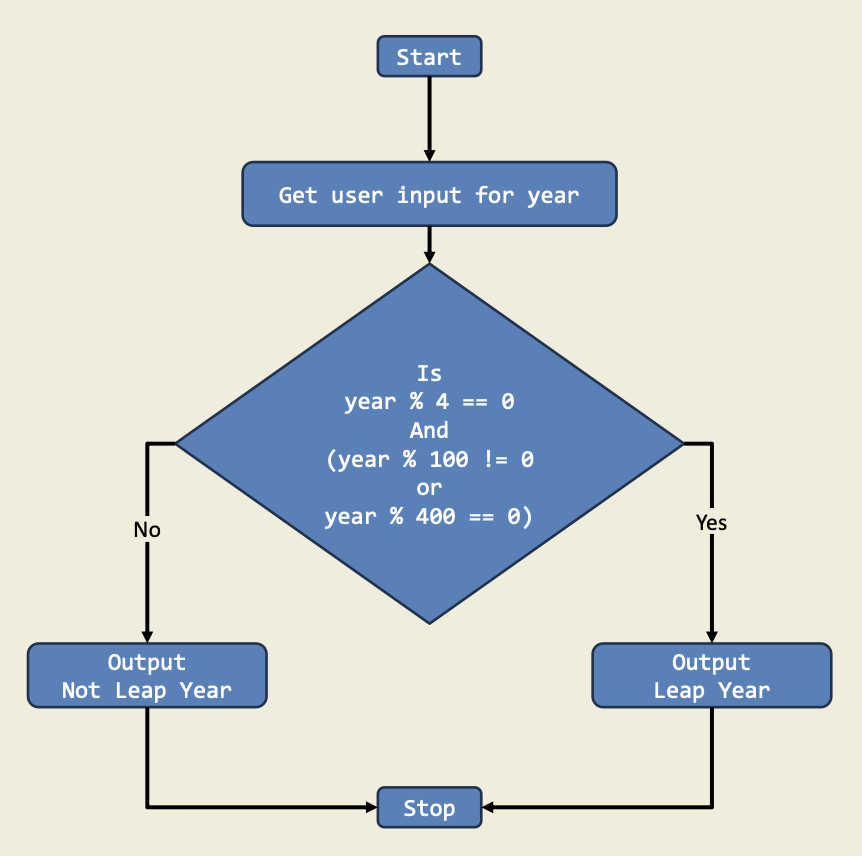
Trinket:
Description:
This project takes a sentence as input and reverses the order of the words, demonstrating string manipulation and basic list operations in Python. It's a simple yet effective way to understand how to break down and rebuild text data.
Diagram:
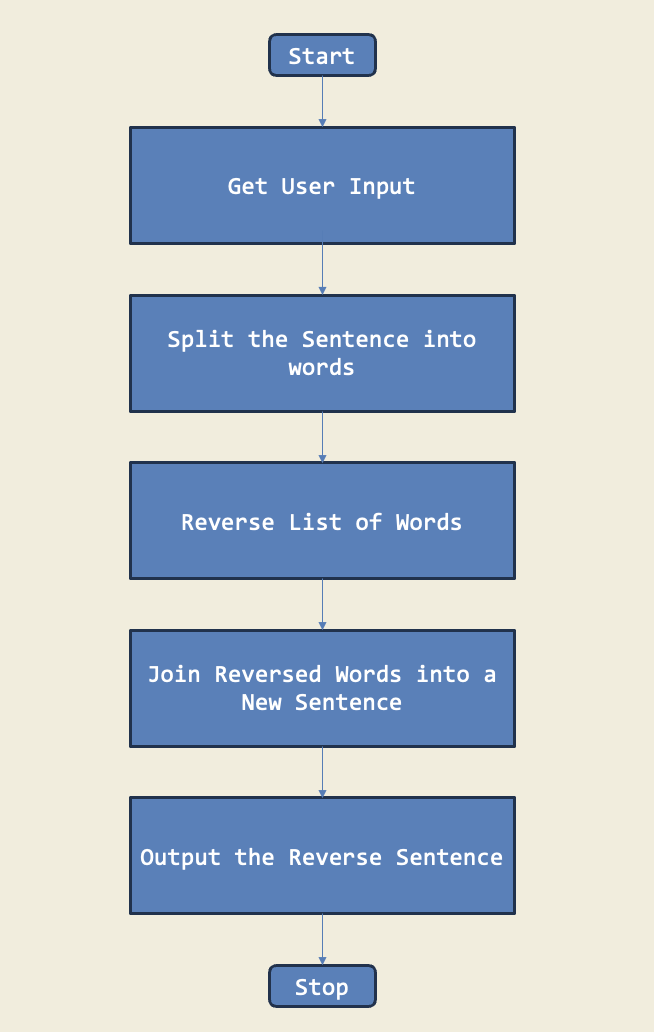
Trinket:
Description:
This project compares the ages of two users and determines who is older. It utilizes basic input/output operations and conditional statements to implement the age comparison logic. The program guides the user through a series of prompts that systematically gather the necessary information, such as names and ages, to perform the comparison. The result is a simple yet effective demonstration of how programming can be used to solve everyday problems.
Diagram:
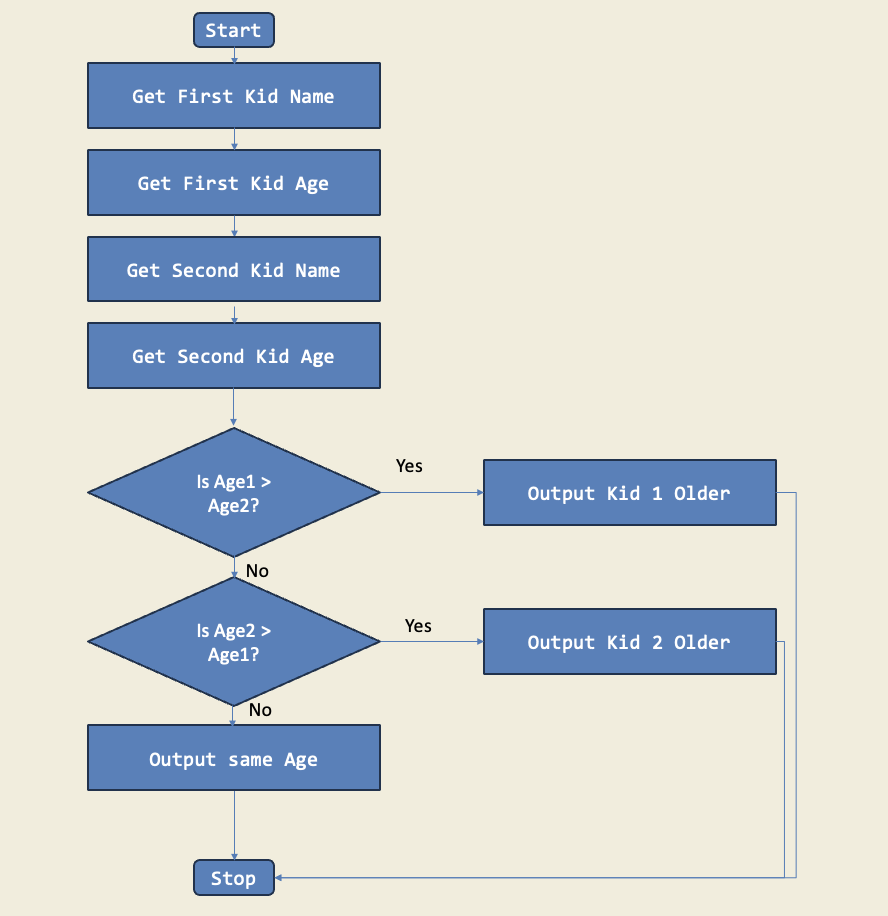
Trinket:
Description:
This project calculates the price difference between two products. It demonstrates the use of variables and basic arithmetic operations to find the difference in price, a common task in programming. The program prompts the user to input the prices of two products and then calculates and displays the difference. This project is a practical example of how programming can be used to solve everyday problems related to budgeting and financial decisions.
Diagram:
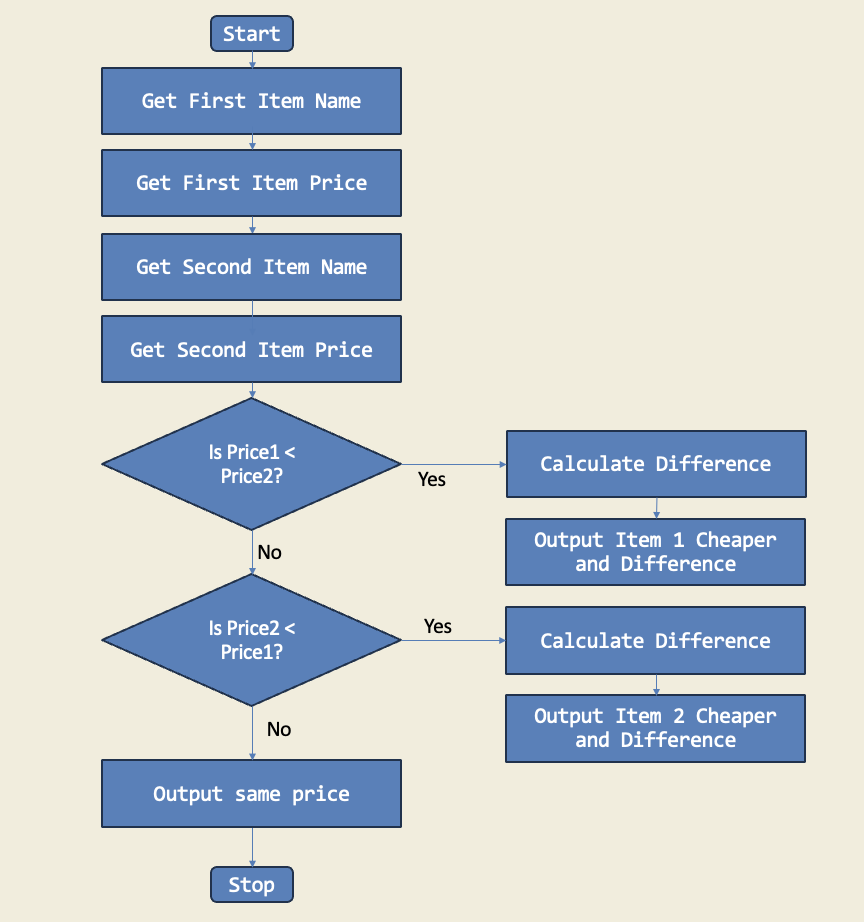
Trinket:
Description:
This project simulates a basic shopping cart experience, allowing users to add items, view their cart, and calculate the total. It demonstrates the use of data structures (like dictionaries or lists) to manage inventory and user selections, along with fundamental arithmetic operations.
Diagram:
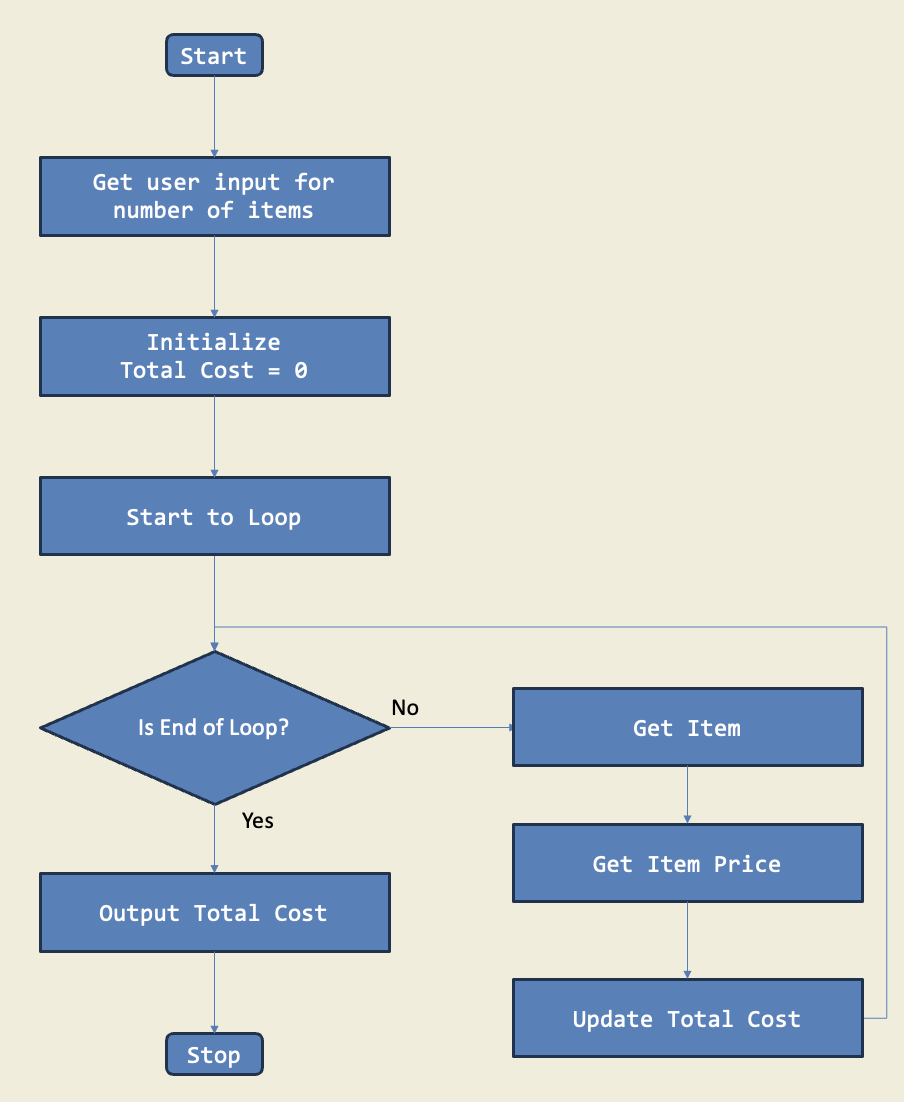
Trinket:
Description:
This project assesses the strength of a user-provided password based on criteria like length, presence of uppercase/lowercase letters, numbers, and symbols. It's a practical application of string methods and conditional statements to implement security principles.
Diagram:
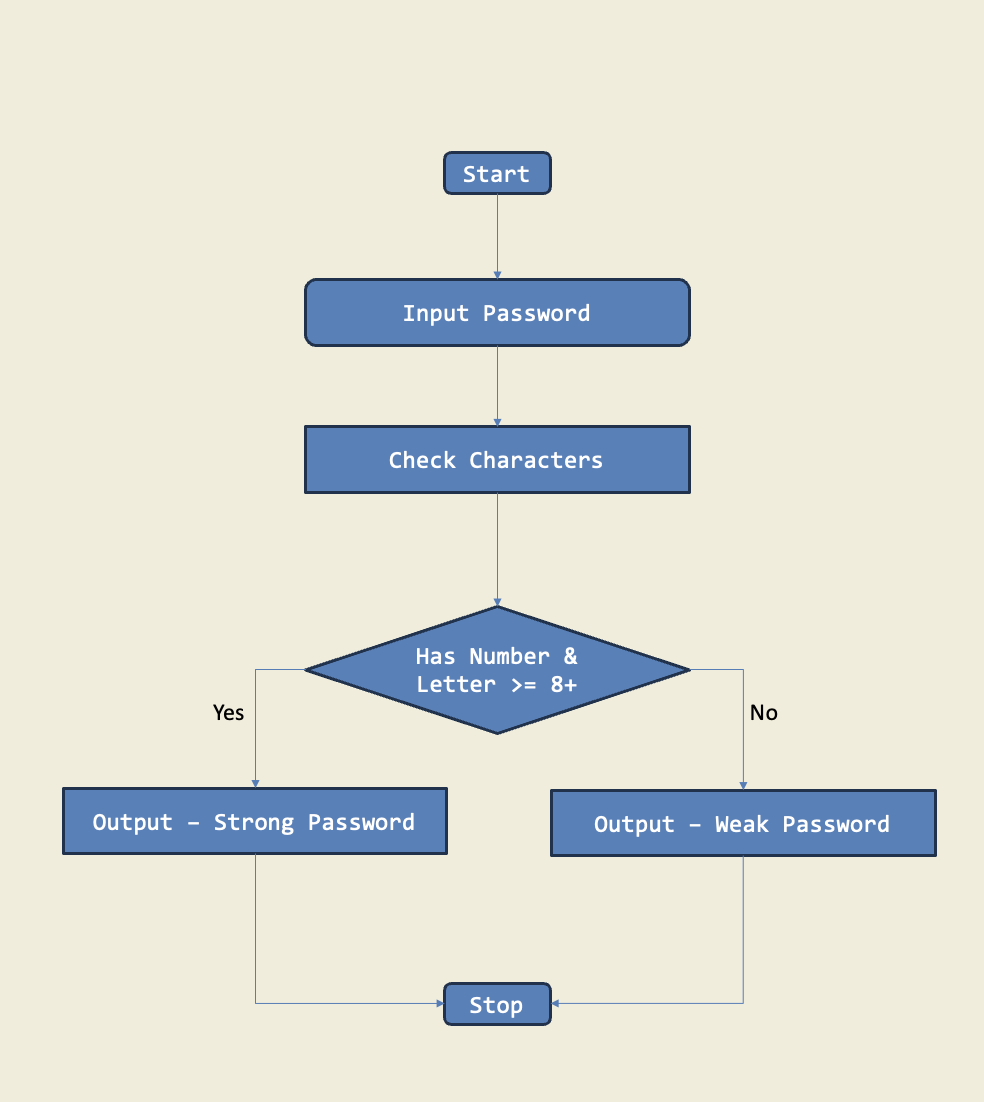
Trinket:
Description:
In this project, I used a for loop to count how many people went to the movies each day for 12 days. I started with a base number and added more every day. This is important because for loops let us do the same calculation over and over quickly.
Diagram:
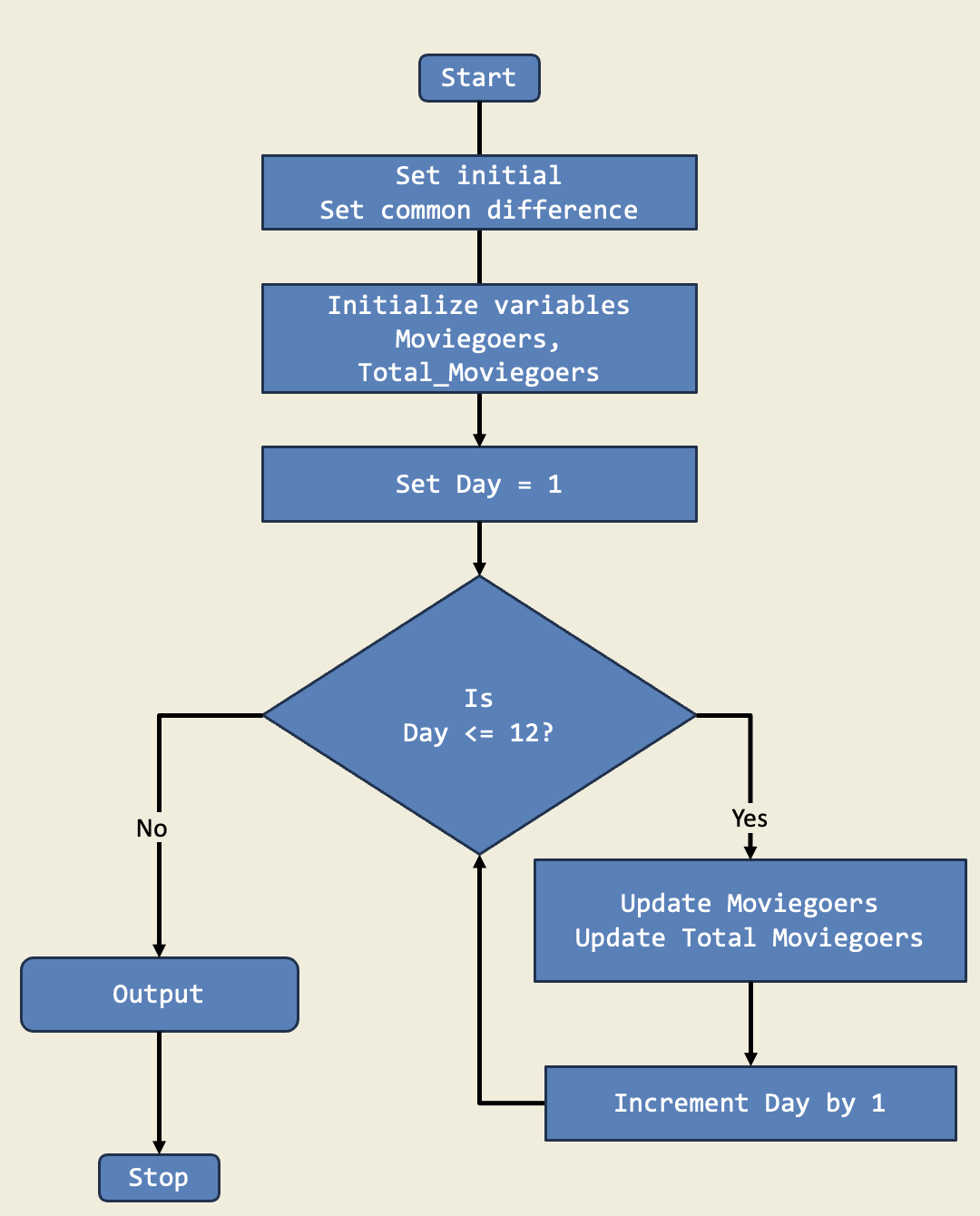
Trinket:
Description:
This project simulates a simplified Automated Teller Machine (ATM) with functionalities like checking balance, depositing, and withdrawing money. It highlights conditional logic, user input handling, and managing a virtual account balance.
Diagram:
